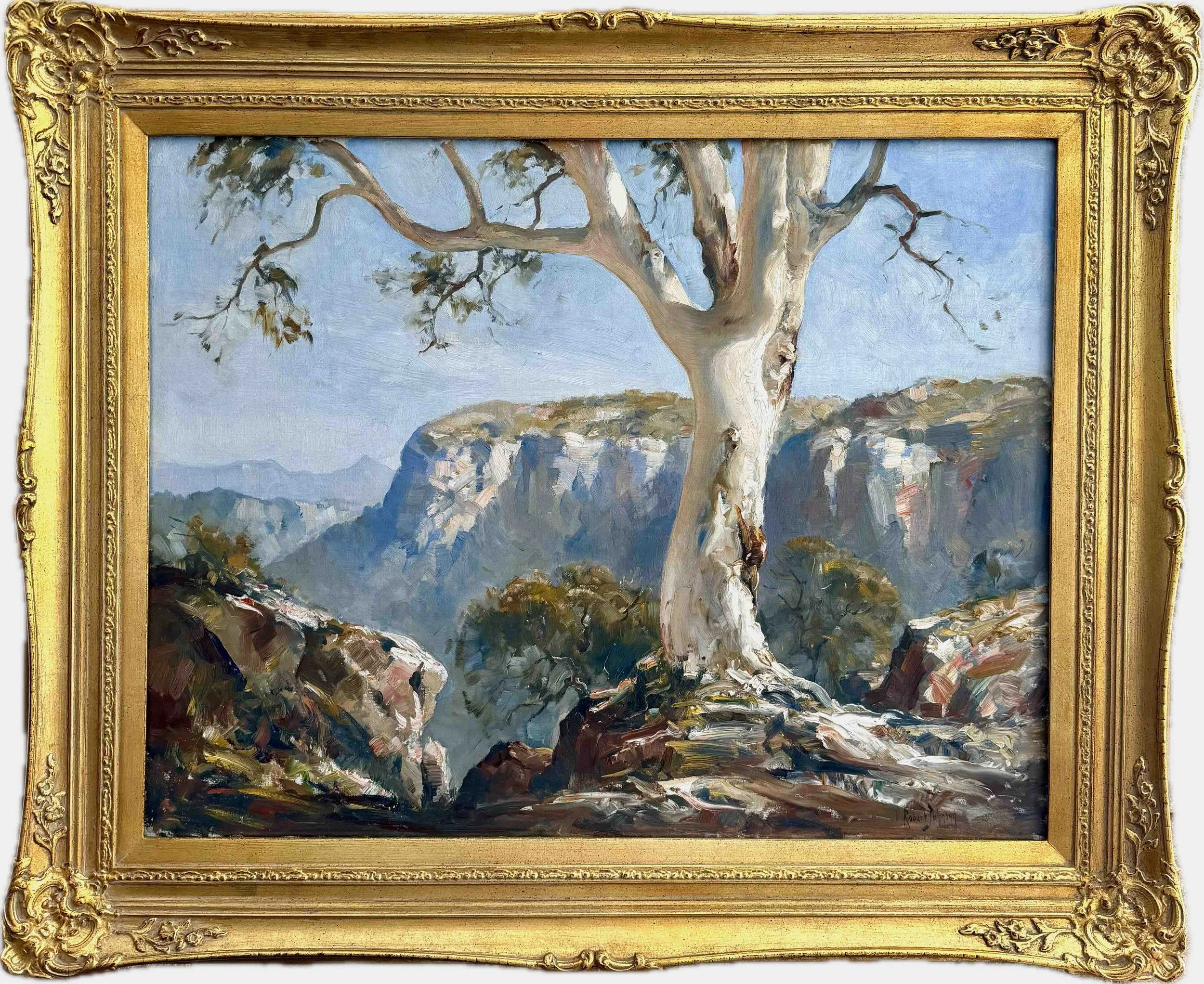Howard Ashton | Hermitage Rd From Kurrajong c 1940
Howard Ashton (1877-1964)
Hermitage Rd, Kurrajong c1940
Oil on timber panel
33.5 x 46.5 cm
Signed lower left
Label verso with title, signature and price 25gns
$3800
Julian Howard Ashton (1877-1964),
Journalist, critic and artist, was born on 9 August 1877 at Islington, London, eldest child of Julian Rossi Ashton and his first wife Eliza Ann, née Pugh. He reached Melbourne with his parents in April 1878. In 1883 the family moved to Sydney where Ashton attended Bondi Public School and Sydney Boys' High School. He was 'brought up in a Bohemian home': his interests were musical, artistic and literary. In 1896-1903 he attended his father's art school where he met Mary Ethel Roberts, whom he married on 27 January 1908.
Ashton's first short story was published in 1904 by the Bulletin, for which he continued to write under the pen name 'Hassan'. He also did line portraits for the Sydney Daily Telegraph, wrote for British magazines such as the Pall Mall Gazette and Chambers's Journal, and occasionally sold paintings at Society of Artists exhibitions. In 1906 he joined the Sydney Morning Herald as a junior shipping reporter, and in 1908 moved to Melbourne and the Argus as a general reporter and, from about 1910, music critic. In June 1916 he returned to Sydney and joined the Sun; by 1922 he was writing seven leaders a week as well as literary, music and art reviews. In 1924 he became editor and in 1926, as associate editor, resumed criticism and leader-writing, covering everything from sport to politics. He also wrote 'Nature notes' for Sunday Sun and Guardian and contributed frequently to Art in Australia. An avowed conservative and anti-communist, Ashton strongly criticized Jack Lang and joined the New Guard. An aggressive opponent of modernism, which he regarded as 'artistic Bolshevism', he dismissed the 1919 Wakelin and de Maistre exhibition of experiments in Post-Impressionism as 'elaborate and pretentious bosh'.
Ashton would have been a full-time artist but for the need to support his family; his earlier works in pastel and oil were fresh and poetic interpretations of sea and country-side, but a stilted realism characterized his later work. In 1938 he won the Sydney sesquicentenary prize for landscape. A member of the Society of Artists, he resigned in 1934 over the election of Wakelin; in 1939 he joined the more conservative Royal Art Society of New South Wales and was its president in 1942-45. Although he strongly disagreed with the award of the 1943 Archibald Prize to William Dobell, he kept out of the ensuing court case because he believed 'no court of law could bring down judgement on a matter of artistic opinion'.
Ashton entertained many visiting musicians at his Mosman home and about 1930 suggested the formation of the first Sydney String Quartet. He was also a keen entomologist and gave his collection of cicadas to the Australian Museum. His wife died in December 1945, and in March 1946 he resigned from the Sun to devote himself to painting and reading. He died on 30 April 1964, and was cremated with Anglican rites; his ashes were placed in a rock near his home. He was survived by a daughter and three sons of whom Cedric Howard is a noted cellist, and Julian Richard an artist and teacher. His estate was valued for probate at £33,019.
Ashton is represented in the New South Wales and Victorian State galleries. His portrait by Paul Delprat is held by the family.
Australian Dictionary of Biography written by Katherine Harper





